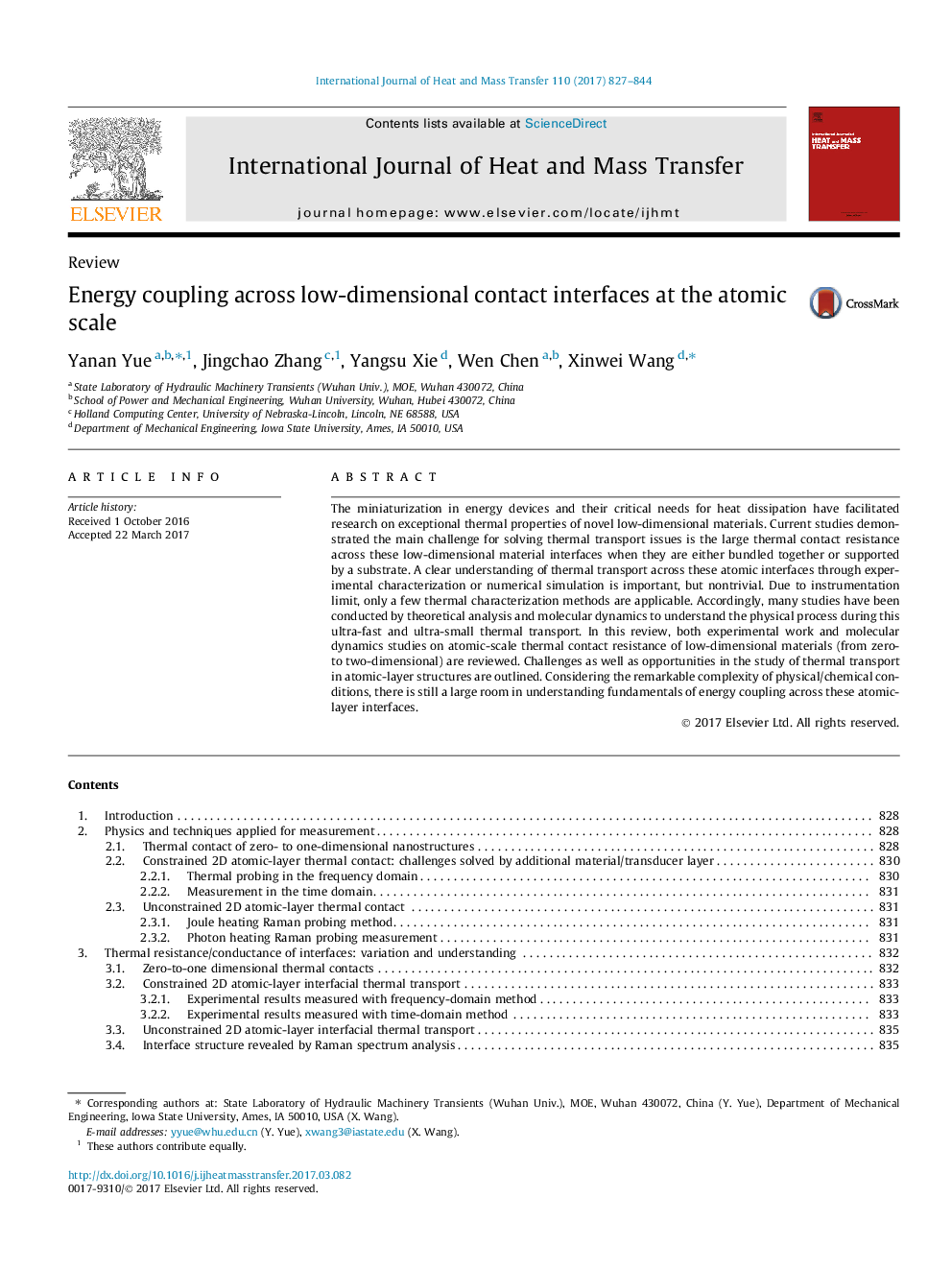| Article ID | Journal | Published Year | Pages | File Type |
|---|---|---|---|---|
| 4993544 | International Journal of Heat and Mass Transfer | 2017 | 18 Pages |
Abstract
The miniaturization in energy devices and their critical needs for heat dissipation have facilitated research on exceptional thermal properties of novel low-dimensional materials. Current studies demonstrated the main challenge for solving thermal transport issues is the large thermal contact resistance across these low-dimensional material interfaces when they are either bundled together or supported by a substrate. A clear understanding of thermal transport across these atomic interfaces through experimental characterization or numerical simulation is important, but nontrivial. Due to instrumentation limit, only a few thermal characterization methods are applicable. Accordingly, many studies have been conducted by theoretical analysis and molecular dynamics to understand the physical process during this ultra-fast and ultra-small thermal transport. In this review, both experimental work and molecular dynamics studies on atomic-scale thermal contact resistance of low-dimensional materials (from zero- to two-dimensional) are reviewed. Challenges as well as opportunities in the study of thermal transport in atomic-layer structures are outlined. Considering the remarkable complexity of physical/chemical conditions, there is still a large room in understanding fundamentals of energy coupling across these atomic-layer interfaces.
Related Topics
Physical Sciences and Engineering
Chemical Engineering
Fluid Flow and Transfer Processes
Authors
Yanan Yue, Jingchao Zhang, Yangsu Xie, Wen Chen, Xinwei Wang,
